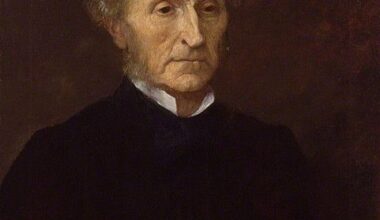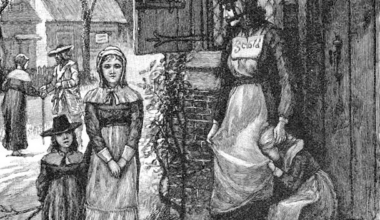Trains of (Free)Thought is a four-part series of reflections prompted by the author’s travels through France, Italy, Switzerland, and Germany between 26 August and 23 September 2025. Other instalments in the series can be read here. All images are the author’s unless otherwise stated.
There is a tavern in the Old Town of Zurich called the Aelpli Bar. It is housed in a building that dates back to the thirteenth century and was originally used as a cowshed. Sitting in a quiet corner of the room, I began to study the images and ornaments of traditional Swiss culture that occupied spaces between the creaking wooden beams and cozy corridors of the room: old wall paintings of Alpine mountains and chalets and flowers, pewterware goblets and decanters arranged in a row above the bar, a cello slumbering in the corner, a well-travelled guitar resting on the shelf, generations of names carved into the tables. Later in the evening, the Allpott Trio took up their instruments: the Ukrainian violinist and vocalist, Yulianna Khomenko, accompanied by two guitarists, Dide Marfurt and Dieter Ringli, performed beautiful Swiss folk music to a growing assortment of locals and visitors. One song, ‘Da höch uf dem Alpen’, is an ode to the beauty of the natural landscape and the peace of pastoral life. It offers a vision of wonder, meaning, and sanctuary available without divine intervention or spirituality.
One narrative of my journey through Switzerland constitutes a tour of religious history and memory. The spires and sculptures of Zurich testify to the intense trajectories of the Reformation in Europe. The city’s four main evangelical churches collectively assert the elegant dominance of Reformed theology over the skyline: The Grossmünster, the Fraumünster, the Predigerkirche, and St. Peterskirche. Located on the east side of the river, the Grossmünster features on its north façade a stone relief sculpture of Heinrich Bullinger (1504-1575), carved in 1940. Down the road at the riverside, a statue of Ulrich Zwingli (1484-1531) stands guard over a fifth church, the Wasserkirche, likewise a Reformed place of worship. On the other side of the country, at the Parc des Bastions in Geneva, a colossal ‘Reformation Wall’ of commemoration erected in 1909 immortalises these figures in even grander stone, alongside several others including the preeminent French theologian John Calvin (1509-1564), as well as English Puritans such as the general and statesman Oliver Cromwell (1599-1658) and the New England colonist Roger Williams (1603-1683).




Another way of telling the story of my Swiss adventure is to reflect on those places beyond the domain of gods and the authority of pastors, from the sweet, sad tones of local folk songs rippling through a rustic tavern nestled in Zurich to the poignant, reflective phrases of Jean-Jacques Rousseau’s ‘return to nature’ resonating atop the peaks of the Hinterrugg and the Chäserrugg, mountains in the canton of St. Gallen. There are churches in the valley here, too: prominent features of the landscape from the ground, yet increasingly obscured from view by forest thickets and wisps of cloud as the hiking trail leads us away from town and towards a different kind of awesome experience, no less complex than religion, yet more attuned to airy breezes, the mischievous trickle of streams, and the choral chime of cowbells.
It is possible to tell these stories separately, stressing the historical and contemporary distinctions they suggest between the sacred and the secular. One narrative is of intense doctrinal debates, seismic shifts in religious culture, and the enduring presence of God in everyday life. The other tale represents a search for alternatives to theism, a turn away from the inventions of mankind, and a move towards the beauty and meaning of nature on its own terms.
At the same time, each story contains parts of the other. Neither is straightforward or simplistic. Neither is confined by the regiments of reason. Corporeality and spirituality inhabit both worlds. Just as there is some intangible transcendence and unarticulated mystery embedded in the history of the Enlightenment and Romanticism, there are streaks of doubt, heterodoxy, and non-belief running throughout the history of religion.
With his Exposition of the Faith (1531), Zwingli drew the ire of Martin Luther (1483-1546) for suggesting, contrary to the focus of the Reformation on faith through Christ, that some pre-Christian ‘heathen’ people were implicated in the framework of salvation and could reach heaven. In response, Luther accused Zwingli himself of being a ‘heathen’, after which Bullinger came to Zwingli’s defence in his True Confession (1545) (see W. Peter Stephens, ‘Bullinger and Zwingli on the Salvations of the Heathen’, Reformation & Renaissance Review, 7, 2005).
While the salvific status of non-Christians was a recurring source of difficulty and debate among Protestants in the early modern era, they also confronted the prospect that unbelief lurked within the spiritual community and within themselves. ‘So deeply rooted in our hearts is unbelief,’ wrote Calvin in his Institutes of the Christian Religion (first translated into English in 1561), ‘so prone are we to it, that while all confess with the lips that God is faithful, no man ever believes it without an arduous struggle’. Far from a monolithic entity, Protestantism has often been marked by division and dissent. While Roger Williams might have secured his place in the pantheon of reformers that now dominates the park in Geneva, he was actually forced to leave the Puritan community of Massachusetts for his unorthodox religious and political convictions. In exile, he founded Providence, in what would become Rhode Island, in 1636, on land purchased from the Narragansett people. The settlement observed toleration towards different religions, treated the native population with respect, and developed a model of separation between church and state.
As much a reaction against the constraints of the Enlightenment as a repudiation of theistic dogma, the heightened introspection that characterised Romanticism invited idiosyncratic impulses of its own. I only began to properly reflect on Rousseau’s intense interiority and dramatic solitude once I had headed outward to the wilderness in the company of dear friends (see also Tim Blanning’s The Romantic Revolution, 2012). ‘Imagine to yourself all these united impressions’, he wrote in Nouvelle Héloïse (1761), ‘the amazing variety, grandeur and beauty, of a thousand astonishing sights; the pleasure of seeing only totally new things, strange birds, odd and unknown plants, to observe what is in some sense another nature, and finding yourself in a new world…one isolated in the higher spheres of the earth’. If this world of natural wonders is isolated, it is nonetheless a community of isolation. The flora and fauna and folk wander together, above the clouds; a different world, yet part of the earth.

Elsewhere, Rousseau overtly recognised such a sense of harmony. In the entry for ‘Church Music, or Plain Chant’ in his Dictionnaire de Musique (originally published 1770; translated into English in 1775), he observed that melodies preserved throughout Christian history contained ‘a beauty of character, and a variety of affections, very sensible to an impartial connoisseur’ and expressed gratitude to ‘the bishops, prevosts, and choristers’ who had helped to ensure that ‘these valuable remains of antiquity may be faithfully transmitted to those who have sufficient talents and authority to enrich the modern system by the addition of them’. He added that, ‘How far soever our music may have been extended into that of the church, I am persuaded that it would be preferable to convey the church music into ours; but for that, much taste is necessary, still more knowledge, and above all, an exemption from every kind of prejudice’.
At the tavern, I notice a motto engraved above the bar in old Gothic lettering: Uf der Alp da gits kei Sund. Zum Trinke het me immer Gründ. A friend has translated this for me: There is no sin on the Alp. There is always reason to drink. In nature, neighbourliness, music, and mirth, believers and non-believers might find common ground and more clearly recognise each other in a shared story.









Your email address will not be published. Comments are subject to our Community Guidelines. Required fields are marked *
Donate